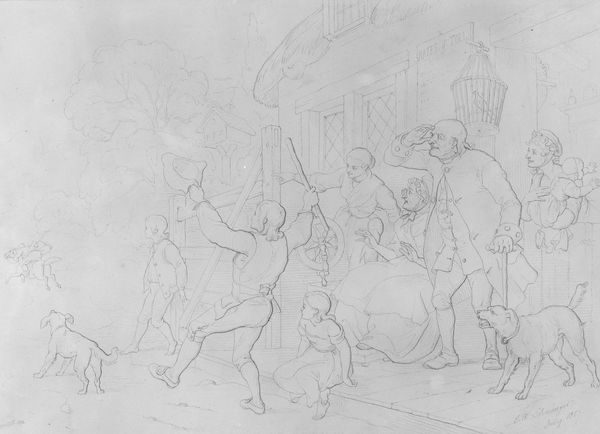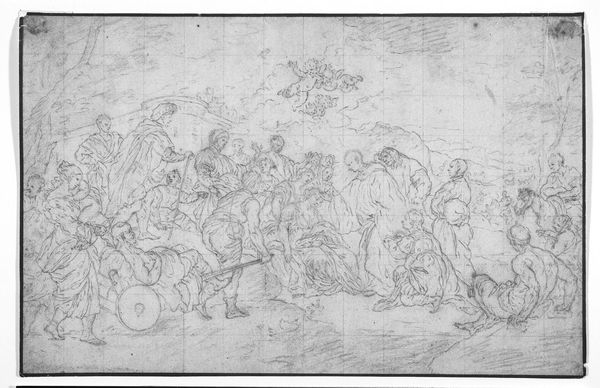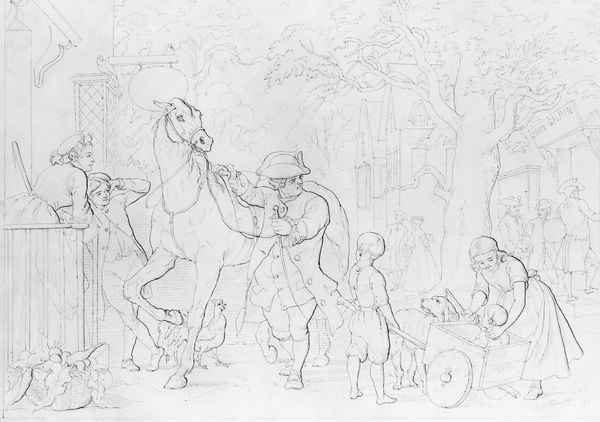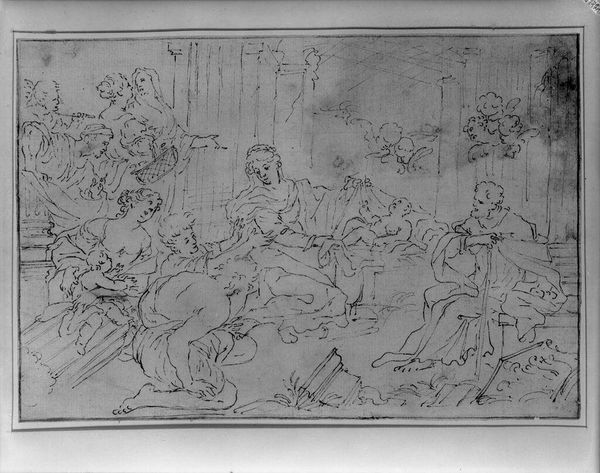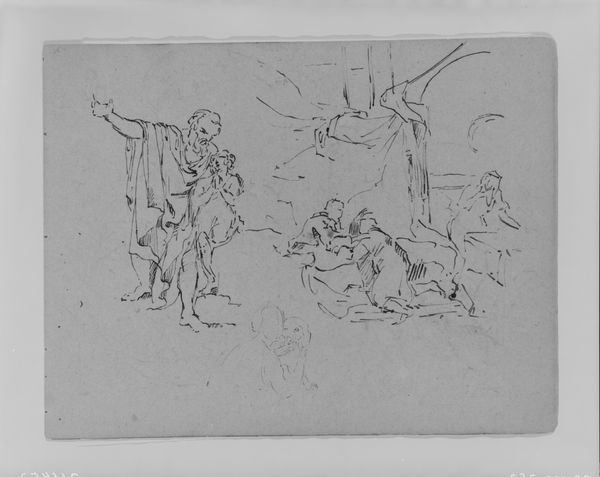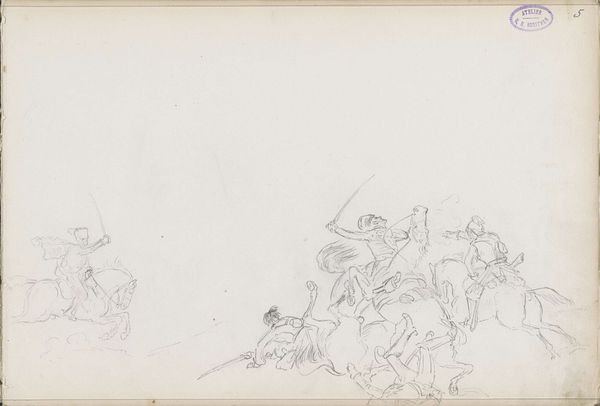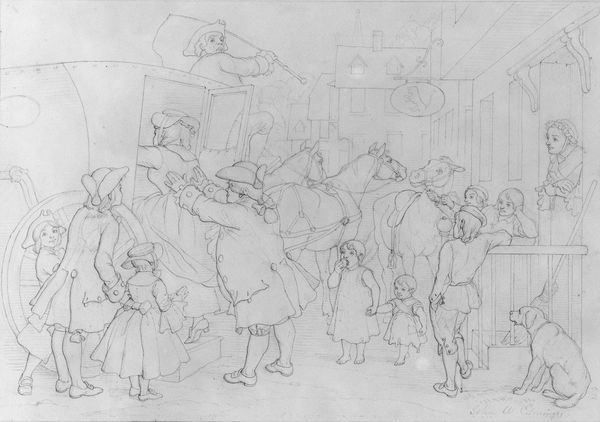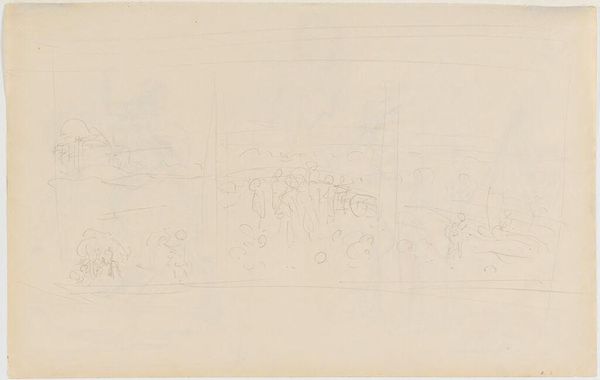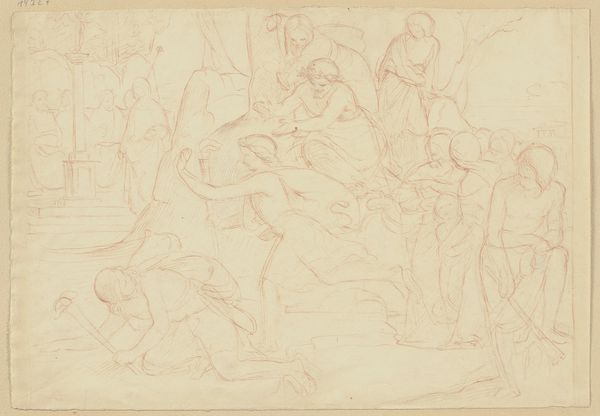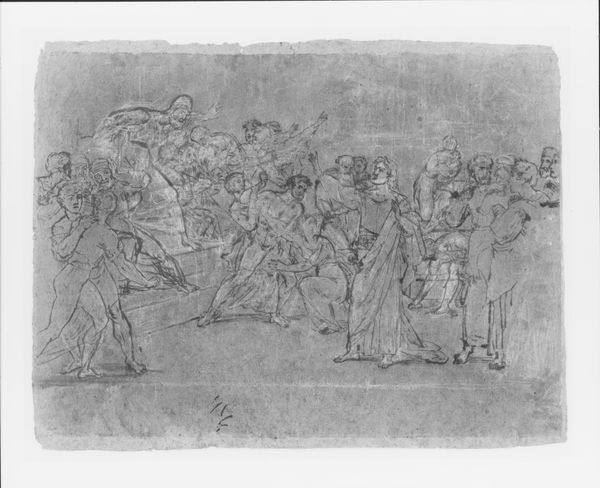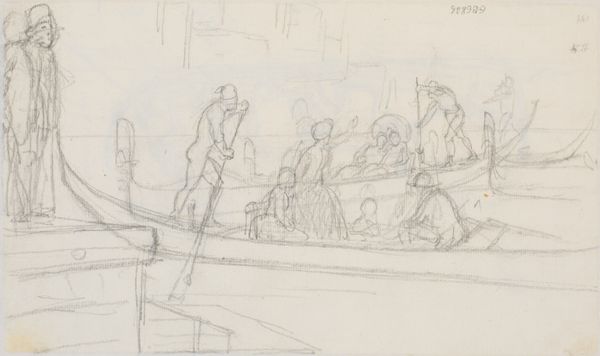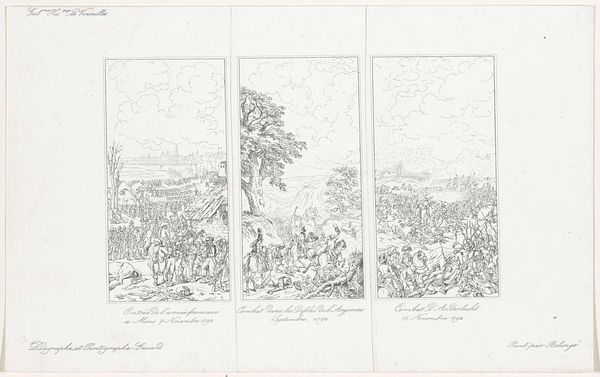
Revelation of the Scarlet Letter 1879 - 1889
0:00
0:00
drawing, print, etching, engraving
#
drawing
#
narrative-art
# print
#
etching
#
pen-ink sketch
#
genre-painting
#
history-painting
#
engraving
Dimensions: Sheet: 15 1/8 x 20 3/8 in. (38.4 x 51.8 cm)
Copyright: Public Domain
Editor: This is Felix Octavius Carr Darley's "Revelation of the Scarlet Letter," made between 1879 and 1889 using drawing, print, etching, and engraving. It's a dramatic scene. The thin lines and grayscale create a somber mood. What strikes you about it? Curator: I'm interested in how Darley's choice of printmaking – a readily reproducible medium – engages with the themes of public shaming and societal structures inherent in Hawthorne's novel. Consider the implications of distributing this scene through mass production. It's not just art, it's commentary made widely available. How does that impact our understanding? Editor: It makes the shame feel amplified, knowing so many could view it. What was the social context of creating prints like this? Curator: Engravings and etchings at the time played a crucial role in illustrating literary works and disseminating visual information. Think about the labor involved: the skilled artisans, the publishing houses, the distribution networks. These processes transformed Hawthorne's narrative into a commodity. The raw emotion depicted, subjected to capitalist means, transforms our encounter of the scene. The work challenges notions of authorship and value when a novel undergoes reproduction and redistribution. Editor: That’s a completely different way of seeing it, less about individual guilt and more about how societal pressures are manufactured and disseminated. The labor and material processes speak volumes. Curator: Exactly. By focusing on the material processes, we expose the socio-economic machinery underlying the spectacle. We are confronted with the question of who benefits from this 'revelation', and how that impacts not just Hester, but everyone who encounters this scene in various forms. Editor: I never thought about it that way, about how the printmaking itself adds another layer of meaning to the story. I’ll definitely look at prints with new eyes.
Comments
No comments
Be the first to comment and join the conversation on the ultimate creative platform.
